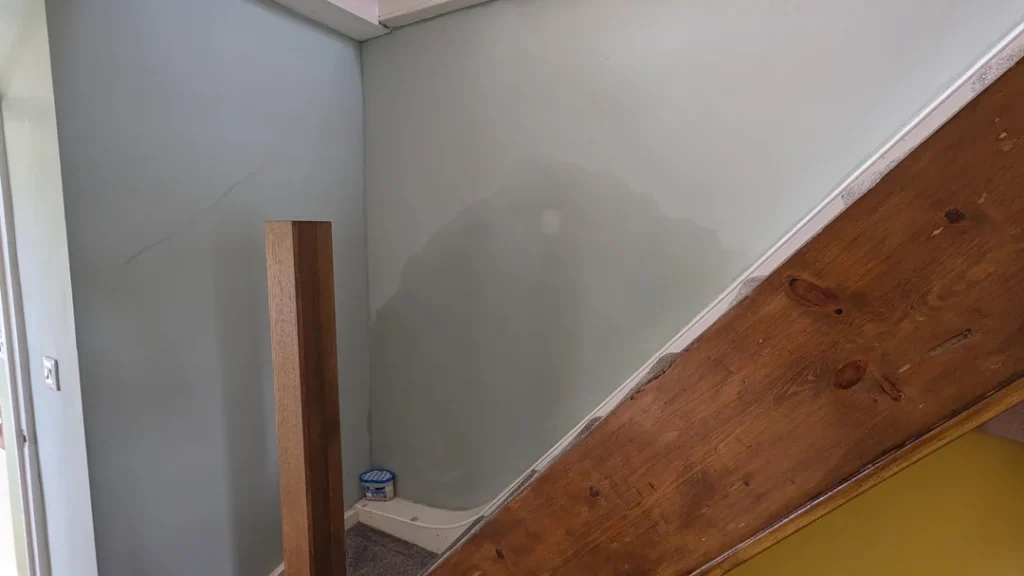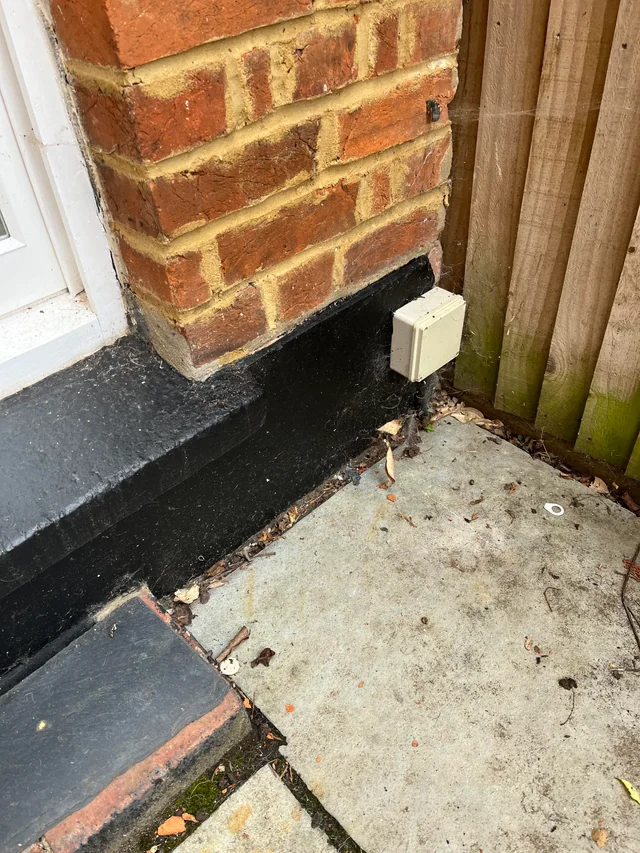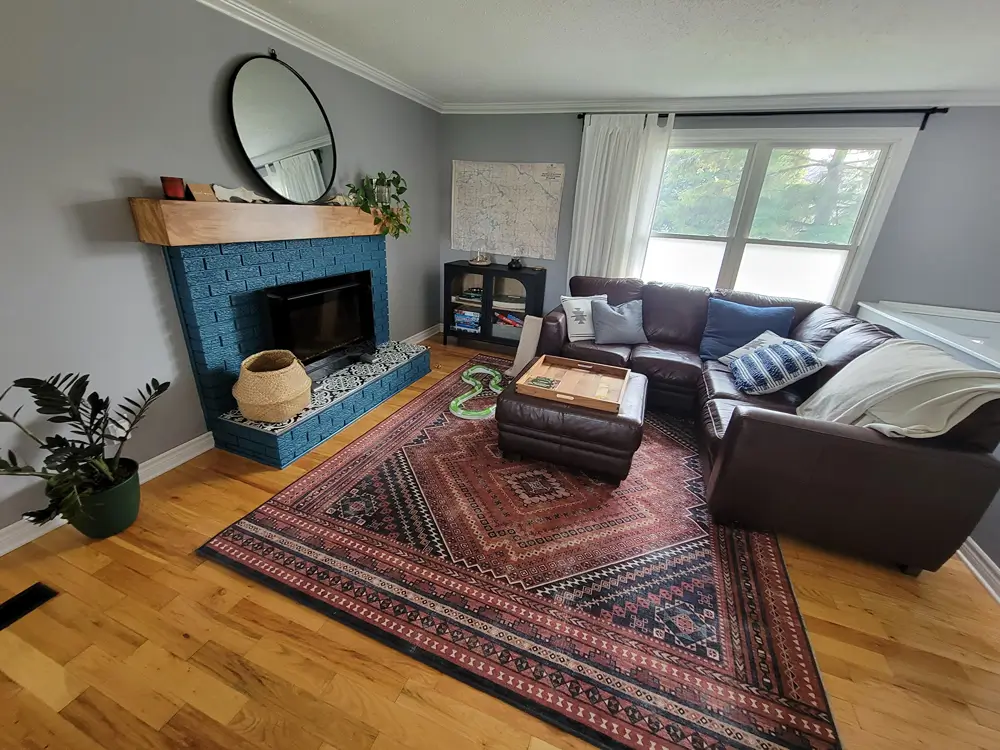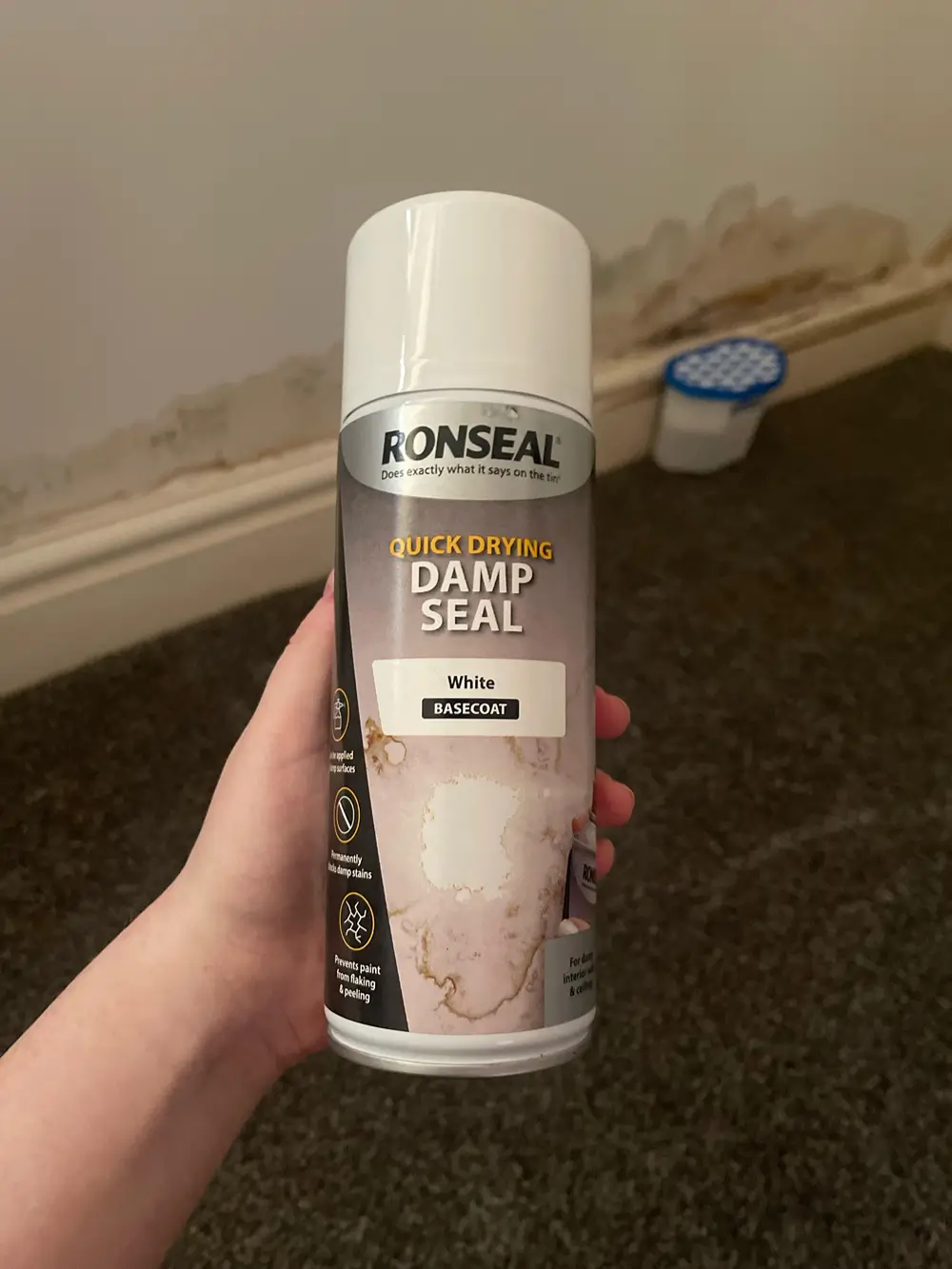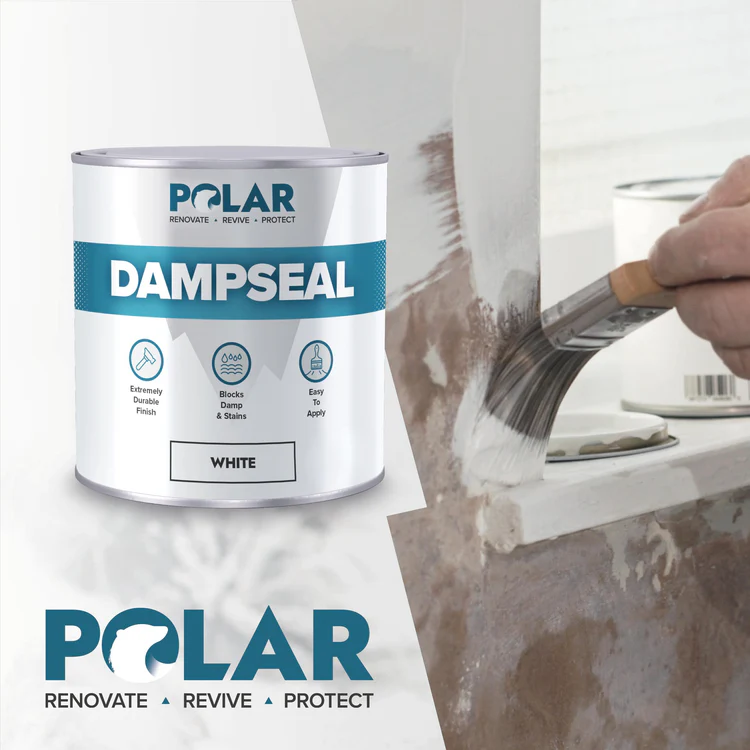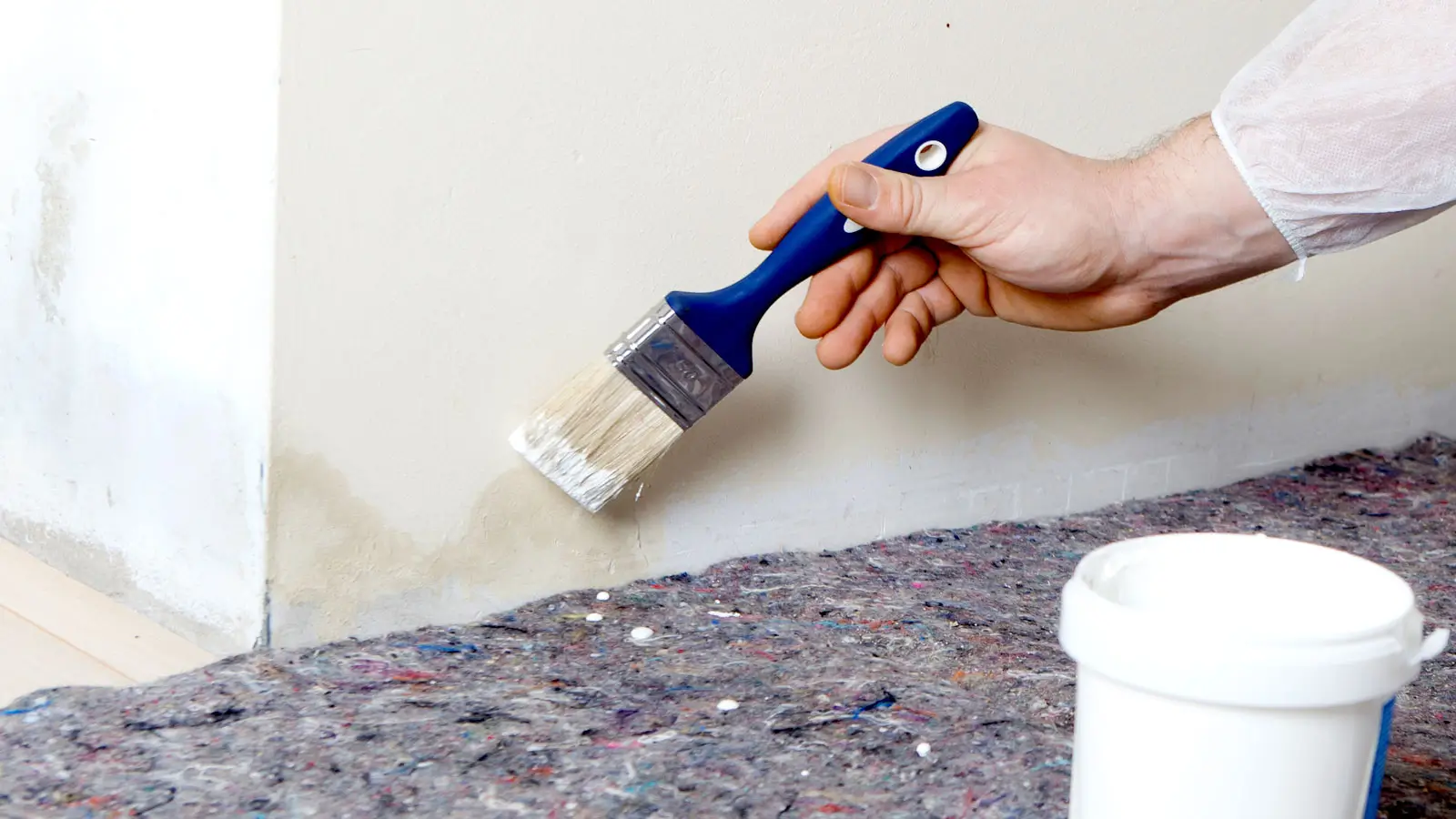Damp is one of those problems that always shows up when you least expect it—and it rarely goes away quietly. Whether it’s that musty patch behind your sofa, bubbling paint in the hallway, or a dark mould bloom creeping across the bedroom ceiling, damp doesn’t just look bad. Left untreated, it damages walls, ruins plaster, and affects your health.
That’s where damp proof paint comes in—or so the labels promise. But with dozens of options like “damp seal,” “anti-mould,” “damp-resistant,” and “moisture-proof” paints on the shelves, it’s easy to get overwhelmed.
This guide breaks down exactly what each type of paint does, when it works (and when it doesn’t), and how to match the right product to your problem. Whether you’re dealing with rising damp, condensation, or a leaky exterior wall, we’ll help you choose the right solution—not just slap a coat of paint over the issue. If the problem is rising from the ground up, you’ll need to treat rising damp internally before any paint can do its job.
What Is Damp Proof Paint and How Does It Actually Work?
Let’s get one thing clear first: damp proof paint doesn’t cure damp. It helps you control the symptoms and stop moisture from affecting your wall finish—but only if the source of the damp has already been dealt with.
Damp proof paint (also sold as damp seal paint, damp block, or damp-proofing paint) is designed to create a barrier between the surface and moisture. It usually contains water-repellent ingredients and is formulated to resist salt stains, blistering, and bubbling.
There are two main types you’ll come across:
- Blocking paints – These physically seal the surface to lock moisture behind them. They’re great for temporary fixes or dry-but-stained areas but can trap moisture inside if used incorrectly.
- Breathable damp sealers – These allow trapped moisture to escape slowly while protecting the surface from further damage. Best for old brick or solid walls where ventilation is important.
These paints are often used on:
- Internal walls showing signs of old damp damage
- Replastered areas post-DPC treatment
- Minor patches caused by condensation or past leaks
- Ceilings that have previously suffered water stains
But here’s the thing: painting over active damp is never a fix. It might look good for a few weeks, but the bubbling, discolouration, or mould will be back—usually worse than before.
Different Types of Damp Treatment Paints
Once you know that your wall is dry—or at least the source of the damp has been fixed—you can choose the right type of paint to treat the surface. Not all “damp paint” is created equal, and using the wrong one can just waste your time (and money). Let’s break down what’s actually worth using.
Damp Seal Paint vs Anti-Mould Paint
| Feature | Damp Seal Paint | Anti-Mould Paint |
|---|---|---|
| Purpose | Blocks damp stains and moisture from surfacing | Prevents mould and fungal regrowth |
| Best Used On | Damp patches, watermarks, tide marks on walls or ceilings | Bathrooms, kitchens, laundry rooms, poorly ventilated areas |
| Function | Acts as a physical barrier to seal in damp | Contains biocides to kill and prevent mould spores |
| Finish Type | Usually matte or undercoat-style | Often satin, matte or wipeable finishes |
| Topcoat Needed? | Yes – not decorative on its own | Sometimes – some are decorative, others are base coats |
| Drying Time | Typically 2–4 hours to touch dry | 1–2 hours depending on brand |
| Common Brands (UK) | Ronseal Damp Seal, Dulux Trade Damp Seal, Polycell Damp Seal | Zinsser Perma-White, Ronseal Anti-Mould, Johnstone’s Anti-Mould |
| Longevity | 2–5 years with good prep | Up to 6 years in well-ventilated spaces |
| Limitations | Doesn’t prevent mould or condensation issues | Doesn’t stop underlying damp or water ingress |
| Price Range (UK) | £12–£25 per litre | £15–£30 per litre |
People often confuse these two or use them interchangeably—but they do very different jobs.
- Damp seal paint (like Ronseal Damp Seal or Dulux Damp Seal) is designed to block stains and prevent moisture from bleeding through to your topcoat. It doesn’t stop mould, but it does seal over dry but damaged areas, especially after patch repairs or DPC work.
- Anti-mould paint, like Zinsser Perma-White or Ronseal Anti-Mould, includes a biocide that kills mould spores and prevents regrowth. It’s ideal for condensation-prone rooms like bathrooms and bedrooms, where mould keeps showing up even after cleaning.
Tip: If your wall has been affected by both moisture and black mould, the best method is to clean it thoroughly, apply damp seal, and then paint over with anti-mould paint.
Damp Seal Sprays and Aerosol Products
These are quick fixes and handy for small spots or tight areas. Most contain the same ingredients as brush-on damp sealers but in a spray format. They’re useful when:
- You’ve stripped wallpaper and found minor staining
- You want to spot-treat corners or above skirting boards
- You need a clean, invisible barrier before painting over
Popular options include damp proof spray, damp seal spray, and dampstop aerosols. Just be careful: they’re not a full substitute for paint-based sealers if you’re treating larger or previously soaked walls.
Waterproof & Moisture-Resistant Paints
You might also see terms like “water-resistant paint,” “moisture-proof paint,” or even Permaseal and SBR waterproofing mentioned on product pages. These aren’t always designed specifically for internal damp—but they have their place.
- Waterproof wall paint is often used externally, especially in basements or exposed brick walls.
- Moisture-resistant emulsions (like kitchen or bathroom paint) resist surface moisture but don’t block internal damp.
- SBR (Styrene Butadiene Rubber) is a hardcore bonding and waterproofing agent often mixed with render or slurry—not regular paint.
Use these in the right place and they’re brilliant. Use them to hide damp, and they’ll peel like bad wallpaper.
Interior vs Exterior: Picking the Right Paint for the Right Wall
Not all damp is created equal—and neither are the paints designed to fight it. The product you use for a damp patch behind the radiator won’t be the same as what you need for a flaky exterior wall or a soggy basement floor. Here’s how to choose the right option based on location.
Best Damp Proof Paints for Interior Walls
Indoor damp is usually caused by condensation, minor leaks, or past damp that’s already been repaired. For internal walls, you’re mostly looking at stains, slight bubbling, or leftover mould patches. In these cases:
- Use damp seal paint first if there’s any visible discolouration, flaking, or salt marks. This locks in the problem so it won’t show through your top coat.
- Follow with anti-mould paint if the room gets humid (think bathrooms, bedrooms, or behind wardrobes).
- Use breathable paint if your wall has solid brick with no cavity or a history of rising damp—it lets trapped moisture slowly escape without ruining the finish.
Popular choices:
- Ronseal One Coat Damp Seal – Good for quick fixes.
- Zinsser Perma-White Interior – Combines mould resistance with long-term durability.
- Dulux Easycare Bathroom+ or Kitchen+ – For moisture-prone but otherwise dry rooms.
Best Exterior Damp Proof Paint Options
External walls deal with completely different issues—like driving rain, poor pointing, or cracks in render. If your paint is bubbling outside or you see green/black algae, that’s likely a sign of penetrating damp.
Here’s what works outside:
- Masonry waterproof paints: These are breathable but water-repellent. They’re ideal for brick, render, or concrete.
- Exterior damp-proof coatings: Thick coatings (like those from Polar or PermaSEAL) can bridge hairline cracks and protect for years.
- Silicone-based sealers or SBR slurry: Used underneath render or paint to prevent deeper penetration.
Do not use interior damp sealers on outdoor walls—they won’t hold up.
Popular picks:
- Polar Damp Seal Exterior
- Thompson’s WaterSeal or Stormdry (for breathable waterproofing)
- Permaseal Damp Proof Paint – A heavy-duty option for weather-exposed walls
Damp Proof Paints for Floors and Special Surfaces
When damp comes from below—like in cellars, concrete slabs, or ground floors—you’ll need something tougher than a wall sealer. Floors are a different beast altogether because of how moisture rises through concrete and screed. That’s where DPM paints and floor-grade damp sealers come in.
When to Use Damp Proof Floor Paint
If you’re seeing white salty patches (efflorescence), musty smells, or flaking paint on your garage or basement floor, chances are moisture is seeping up through the slab. Ordinary floor paints won’t hold—they’ll just lift within weeks.
What works instead:
- Damp proof membrane (DPM) paint – This creates a waterproof layer over concrete or screed floors. It’s usually two-part epoxy or bitumen-based.
- Floor sealers and waterproof primers – Used before tiling or carpeting, they block moisture from rising into your new finish.
- Concrete floor paints with moisture resistance – Good for utility rooms or outbuildings with occasional dampness.
Examples worth checking:
- Everbuild Black Jack DPM
- Watco Epoxy Damp Proof Membrane
- Polar Floor Damp Seal
What About Metal or Odd Surfaces?
If your damp issue is hitting metal pipes, beams, or odd bits of furniture in a humid space, you’ll want something with rust resistance too.
- Use waterproof metal paint that includes rust inhibitors (like Hammerite or Rust-Oleum Moisture Guard).
- For radiators or metal surfaces with surface condensation, apply a rust-inhibiting primer first.
Brand Comparisons & User-Approved Products
Not all damp proof paints live up to their label claims—and when you’re standing in a B&Q aisle or scrolling Screwfix reviews, it can be hard to separate solid performers from short-term cover-ups. Here’s a breakdown of the most talked-about brands in the UK, based on expert testing, trade reviews, and homeowner feedback.
Ronseal Damp Seal
This one’s a go-to for many UK homeowners dealing with minor patches and post-leak repairs. It goes on thick, dries fast, and blocks stains like smoke or yellow tide marks.
- Pros: One-coat coverage (on light stains), good for plaster and brick.
- Cons: Needs a dry surface—don’t use on active damp. Some bubbling if surface isn’t prepped right.
- Where it shines: Hallways, ceilings, walls after fixing a leak.
📌 Real-world use: Rated 4.4/5 from over 2,500 reviews on Screwfix.
Dulux & Polycell Damp Seal Paints
These are higher-end options in terms of price, but offer smoother application and better colour consistency when you paint over them.
- Dulux Damp Seal: Feels more like a proper emulsion primer. It’s known for not flashing through paint layers.
- Polycell Damp Seal: Often used with Polycell’s anti-mould range. Thick, sticky, and very stain-blocking.
📌 Expert note: Dulux Trade Paints tested in 2023 by Homebuilding & Renovating Magazine performed best for finish under colour coats.
Polar Damp Seal
Gaining popularity as a value-for-money alternative, especially for exterior use or rental properties. It’s also sold in spray form for convenience.
- Pros: Available as both spray and tin, good for touch-ups.
- Cons: Coverage can be thinner—often needs two coats.
- Real-world appeal: Budget-friendly and available on Amazon, often bundled with mould spray.
Permaseal Damp Proof Paint
If you’re dealing with serious moisture issues—think basements, wet walls, or below-grade spaces—Permaseal is designed for heavy-duty performance.
- Used for: Floor slabs, rendered walls, and areas at risk of flooding.
- Technology: Often contains cementitious or bitumen-based waterproofing agents.
📌 Used by trade professionals in heritage buildings with lime plaster and solid brick walls.
Kenwood Damp-Proofing (Reviewed Service)
While not a paint brand, Kenwood is a well-known damp-proofing contractor. Many users report being offered branded paint treatments as part of their service—often bundled with chemical DPC injection.
- Note: Rated 4.6 stars on Trustpilot as of 2025, though reviews vary depending on location and technician.
- Check before booking: Whether they include follow-up painting or expect you to source your own.
Can You Paint Over Damp? (And What Happens If You Do)
Short answer? You shouldn’t. Painting over damp might give you a temporary cover-up, but the problem always comes back—and often worse.
❌ Why It Doesn’t Work
When walls are still wet, even the best damp seal paint won’t stick properly. Moisture trapped underneath pushes the paint outward. This leads to:
- Bubbling and blistering
- Flaky or peeling patches
- Discolouration coming through
- Worse mould regrowth (especially under vinyl paint)
If you’ve ever used “damp proof paint for walls” and it peeled within weeks, it wasn’t the paint—it was the damp underneath.
As the UK’s Property Care Association explains, “surface treatments only work if the substrate is dry.” They recommend that walls show a moisture reading below 20% on a calibrated meter before painting. Reference: Property Care Association (PCA) – www.property-care.org
🧪 How to Test If It’s Safe to Paint
Before painting, do this:
- Use a moisture meter: Hold it against the affected wall—under 16–18% is ideal.
- Tape test: Apply a square of clear plastic to the wall and seal the edges with duct tape. Leave it 24 hours. If moisture collects underneath, the wall’s still damp.
- Smell check: A musty odour? That’s mould or fungal growth—treat it before painting.
Once you’re sure the wall is dry, you can apply a damp seal primer followed by your chosen paint finish (mould-resistant for humid areas).
Removing Mould from Walls Before Painting
Before you even think about painting, you’ve got to deal with the mould. Painting over it doesn’t kill the spores—it just hides them. And in a few weeks? They’ll punch right through your fresh new wall like it never happened.
Step-by-Step: Get Rid of Mould the Right Way
- Wear protection – Always use gloves, a mask (preferably FFP2), and goggles. Mould spores can irritate your lungs, especially if you’re asthmatic.
- Ventilate the space – Open windows wide and use a fan if you can. Never treat mould in a sealed room.
- Use a proper mould killer – Forget bleach. It might remove stains, but it doesn’t kill deep spores. Use a specialist mould remover like:
- HG Mould Spray
- Astonish Mould & Mildew Blaster
- Screwfix No Nonsense Mould Spray
- Let it dry completely – Wait at least 24 hours before painting or sealing.
- Prime with anti-mould sealant – Once the wall’s dry and clean, use a damp seal or anti-fungal primer like Zinsser B-I-N or Polycell Mould Guard.
How Long Does Damp Proofing Last?
Damp proofing isn’t something you want to revisit every few years—it’s messy, expensive, and disruptive. So naturally, the big question is: how long will it actually last?
The Truth About Lifespan
- Chemical damp proof courses (DPCs): These typically last 20–30 years, depending on wall structure and application method. If you’re budgeting for repairs, it’s worth checking the current damp proofing cost in the UK so you know what to expect from tradespeople or installers. Some reputable providers even offer guarantees of up to 25 years. The British Board of Agrément (BBA) confirms that modern damp proofing systems are expected to provide long-term protection when installed correctly (source).
- Damp seal paints: These are much shorter-term. Expect:
- 3–5 years of protection on well-prepared indoor walls
- 1–2 years on exterior walls, unless regularly maintained or top-coated
- Anti-mould paints: Brands like Zinsser and Ronseal claim up to 6 years of protection, provided the room remains well-ventilated.
- DPM floor membranes (liquid or sheet): Can last 25 years+, assuming no cracks or punctures.
🛑 What Shortens Lifespan?
- Painting over damp before it’s dry
- Poor ventilation or ongoing condensation
- Cracked rendering or blocked gutters
- Skipping proper cleaning before applying damp seal or mould treatments
As Peter Cox, one of the UK’s oldest damp specialists, explains in their guidance notes: “No damp proofing product will work if used over active damp or untreated defects. Longevity always depends on correct prep.” 🔗 petercox.com/damp-proofing
FAQs About Damp Proof Paints & Treatments
Let’s wrap it all up by answering the most common (and honestly, most Googled) questions people ask before picking up a paintbrush.
❓Can I just use anti-mould paint to fix damp?
Nope. Anti-mould paint helps prevent mould growth in humid rooms, but it won’t fix dampness from leaks or rising moisture. You need to treat the source of damp first, then use damp seal or DPM paint depending on location.
❓Is there a paint that works for both interior and exterior?
Technically, yes—but you’ll get better results using formulations specific to each surface. For example, Polar and Permaseal offer products for both inside and outside, but each has a different base (like acrylic or bitumen) tailored for the job.
❓Will waterproof paint stop rising damp?
No. Rising damp needs a physical or chemical DPC (damp proof course). Waterproof paint might temporarily cover the effects, but the issue will keep returning. According to the PCA, true damp solutions always involve treating the cause, not just the surface (PCA guide).
❓What’s the best way to prep a wall before damp proof painting?
- Let the wall dry completely
- Clean off all mould and loose paint
- Fill cracks or damaged plaster
- Sand lightly and dust off
- Apply damp seal or primer before your topcoat
❓What’s the difference between damp proof paint and damp seal?
- Damp seal is usually a primer that locks in stains and prevents bleeding.
- Damp proof paint is often a thicker, more durable coating for walls or floors to block moisture.
Think of sealers as the undercoat and proofers as the final armour.
❓Does damp proof paint work on ceilings?
Yes, especially products like Ronseal One Coat Damp Seal or Zinsser B-I-N. These are popular for treating yellow or brown tide marks from leaks and ceiling condensation. Just make sure the ceiling is dry and cleaned first.

